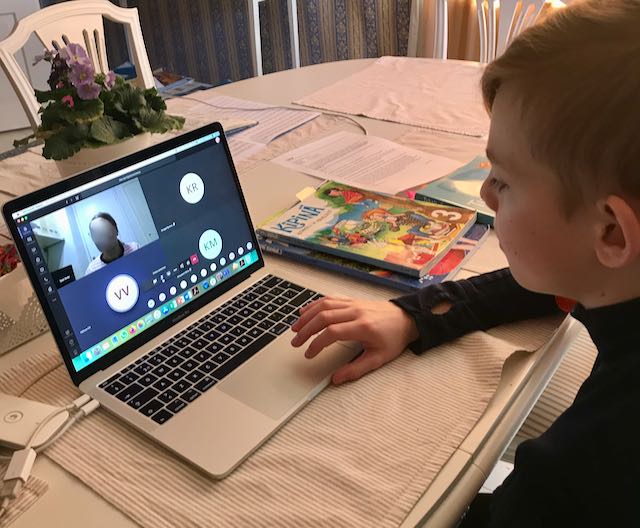We have globally had the biggest human test in the history of education in the form of distance teaching. Schools and teachers were forced to change to distance teaching without warning and careful prior planning. How can distance learning be effective? Here are 10 Distance Teaching Tips that Finnish teachers apply to distance teaching.
The ultimate goal of teaching is to promote learning
Many principles equally apply to learning in classroom and in distance teaching. The key question is: how can you promote learning and produce better learning results in distance teaching?

When teaching is done remotely and online, it cannot be done exactly the same way than in face-to-face teaching. Teachers must find different types of pedagogical solutions that really utilize the new possibilities of distance teaching, but that don’t simultaneously overwhelm the teacher or the students.
10 teaching tips for successful remote / distance learning:
1. Create a safe atmosphere
A safe atmosphere is essential for learning in all situations, and that is the case in distance teaching, too. Distance teaching itself can be intimidating, at least to some of the students.
Therefore, it is essential to create a positive atmosphere right from the beginning of distance teaching.
2. Plan a pedagogically smart lesson structure to distance teaching situations
Learning follows the same principles, no matter which media we use for studying. Applying different pedagogical phases or functions to distance teaching lessons too is important for promoting learning. Distance teaching requires constant alertness and can be exhausting both cognitively and emotionally. This is why you should focus on quality over quantity in distance teaching!
3. Use versatile methods and different kinds of activities
Receiving information passively is not a sufficient way to help the students engage with the learning. Different learners benefit from or enjoy different types of activities. Therefore, it is essential to use versatile methods and do something meaningful related to the lesson’s content in distance teaching, too.
4. Pay attention to the holistic development of the students
The holistic development of a student means the growth of their intellectual, mental, physical, emotional and social abilities. This means that there should be a good balance between academics and other activities. Learning should include communicating with others, engaging in authentic learning experiences, reading, creating, and being physically active.
5. Pay attention to pacing
Pacing means that the teacher plans a suitable timetable with enough breaks for every distance teaching session. It is good to change the activity often enough. The activities should not last too long: depending on the activity, 5–20 minutes is usually an appropriate time.
6. Remember brain breaks
According to scientific research brain needs breaks to digest and process new information. In addition, breaks help students to focus more in studying. In general, it is wise to have a break after 45–60 minutes of studying. The break should last at least 10–15 minutes and allow students to relax and rest between the study sessions.
7. Create possibilities to interact and collaborate with others
Distance studying can be quite lonely. In the course of a regular school day, students engage with other students or adults numerous times. In distance teaching, all this has suddenly vanished or decreased.
According to scientific studies, interaction and collaboration with others both have a very positive impact on learning. As a teacher, you should plan how students could work together to ensure that they feel like they are a part of the class and learning community.
8. Give students time to reflect on their own learning
Reflection is a part of learning: it aims at achieving better understanding and leads to new learning. In distance teaching, this natural interaction easily diminishes. Therefore, it is vital to require reflection and create opportunities for interaction and discussions.
9. Utilize the learning environment
Distance teaching means that students usually study at their own homes. Home as a learning environment can be an endless source of creativity! Many assignments can be designed to utilize different domestic items that are found in every home. Linking assignments to chores or other responsibilities at the students’ own houses is also a good option: this also promotes learning the necessary life skills.
10. Be there to guide, support and help students
Distance studying requires several advanced skills like time management, self-directedness, self-regulation, responsibility and many others. For many students, distance studying requires a lot of practice and support, and the teacher is the key person for providing support. We hope that these 10 distance teaching tips are helpful!
All this puts teacher in the center for guiding and facilitating learning. How can we help teachers to survive with this challenging task? How can we equip and empower teachers to be there to help the students the best possible way? From the Finnish perspective, teaching is an interactive relationship between teacher and student. Teacher is there to guide, help and support students to develop as human beings. Teaching is ultimately a human relationship.
With the help of LessonApp we can strengthen teachers´ pedagogical skills and understanding. The aim is to provide them best possible technology and other tools to help them in their work. We can empower them in their invaluable work: raising the next generation, our future.
Johanna Järvinen-Taubert
Pedagogical Director


